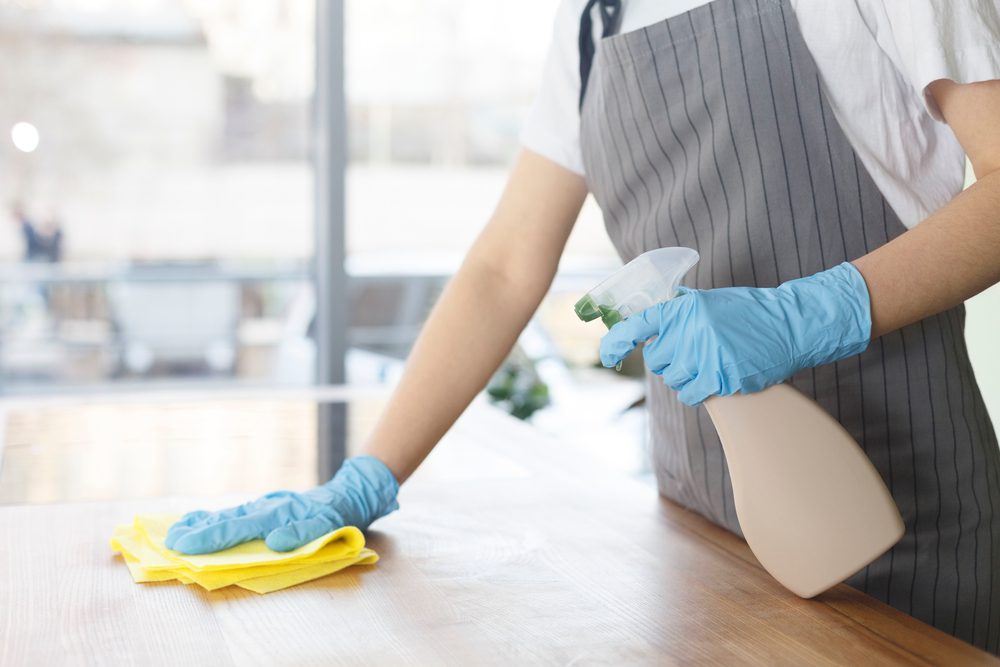Benefits of Microfiber Cleaning Products

You can clean almost anything with the right microfiber cleaning product. Of course, it's no secret that Americans love their paper towels. In fact, we use paper towels more than any other country in the world. A Natural Resources Defense Council study found that the average American family uses around 500 pounds of paper towels each year-- that's enough to fill an entire garbage truck! From that fact alone, we think it's time to consider some new cleaning tools.
Microfiber technology has been a significant product innovation in both the residential and commercial cleaning industries. Whether house cleaning or disinfecting an arena, there is the right microfiber product to fight germs. In addition to a green cleaner, it is important to also choose an environmentally-friendly cleaning cloth.
What is Microfiber
Microfiber is a result of a synthetic blend of materials. Due to being a blend, a microfiber cleaning cloth has a finer feel thanks to those materials' smaller fibers. By design, this material attracts negatively charged dirt which means sometimes eliminating the need for a detergent. Less dust, less detergent = better indoor air quality.
In fact, a microfiber cloth can actually be made of over 100,000 fibers per square inch. With so many fibers, this means less cleaning product - or chemicals. Along with cleaning, all these microfibers are also a great dirt and dust attractant.
Types of Microfiber Used for Cleaning
Let's look at the three types of cleaning tools made of microfiber material commonly used: dry mops, wet mops, and cloths:
- Dry Mops: Dry microfiber mops are perfect for quickly removing dust from floors or other surfaces. They are usually made of synthetic materials like polyester and nylon, making them durable and easy to clean.
- Wet Mops: Wet mops are best for cleaning surfaces that need to be scrubbed. Unlike traditional mops, microfiber is quick absorbent and leaves a streak-free surface.
- Cloths*: Cloths are the most versatile type of microfiber, as they can be used for dry or wet cleaning. Cloths can be made of different materials, such as microfiber, cotton, or a combination of both. Several types of microfiber cloths can be used for different applications:
*Tip: The CDC recommends color coding cloths: one for cleaning and one for disinfecting. This will prevent cross-contamination.
Types of Microfiber Cloths
Glass Cleaning Cloth
A glass cleaning cloth is perfect for removing fingerprints and smudges from windows, mirrors, and other glass surfaces. They are usually made of soft, absorbent microfiber, which helps them to remove dirt and dust without leaving streaks behind.
All Purpose Cloth
An all-purpose cloth can clean various surfaces, including wood, plastic, and metal. They are usually made of synthetic materials like polyester and nylon, making them durable and easy to clean.
Polishing Cloth
A polishing cloth is designed to polish and shine surfaces without leaving scratches, streaks, or lint. Polishing cloths have a longer nap and a higher pile than an all-purpose terry weave cloth, typically made with a coral fleece microfiber to be ultra-plush.
Textured Cloth
A textured cloth is perfect for cleaning surfaces with many nooks and crannies. Microfiber cloths with a textured weave, like a waffle towel, are great for scrubbing or drying due to the uneven surface, and ability to wick away moisture.
Benefits of Using Microfiber Over Traditional Cleaning Products
A microfiber mop and other related products offer several advantages over traditional cleaning methods. Advantages of microfiber cleaning include:
- They effectively remove dirt and dust from surfaces without scratching or damaging them.
- They can be used with water or a cleaning solution.
- They are machine-washable, reusable, and require significantly less liquid and chemicals to work, making them the perfect green cleaning companion.
- They are more durable than traditional cotton cloths. Therefore, in addition to being eco-friendly, they provide economically friendly cost savings.
How to Use
Microfiber can be used for dry or wet cleaning. When using microfiber for dry cleaning, simply dust the surface with a cloth. For wet cleaning, dampen the cloth with water or a cleaning product.. Then, wipe the surface clean.
How to Clean Microfiber Cleaning Cloths
Caring for your microfiber cloths is essential to keep them working effectively. Here are a few tips on how to properly care for them:
- Wash them in warm water with a mild detergent. Do not use bleach or fabric softener, as these can damage the cloth's fibers.
- Air-dry your microfiber cloth rather than putting them in the dryer, as this will help preserve its fibers.
- Store them in a container where they will not be exposed to sunlight or heat, as both of these can damage the cloths.
- Replace your cloths when they lose effectiveness or become visibly stained.
In addition to microfiber’s cleaning properties, there is its major impact on reducing waste. And let’s not forget the financial aspect. Buying these types of cleaning products in bulk can also be beneficial to your budget. Then, create a master plan on how these items are used and cleaned. With proper care, their lifetime can be extended which further reduces waste.
Ask about Pritchard Industries microfiber cleaning and the other eco-friendly cleaning methods available.
